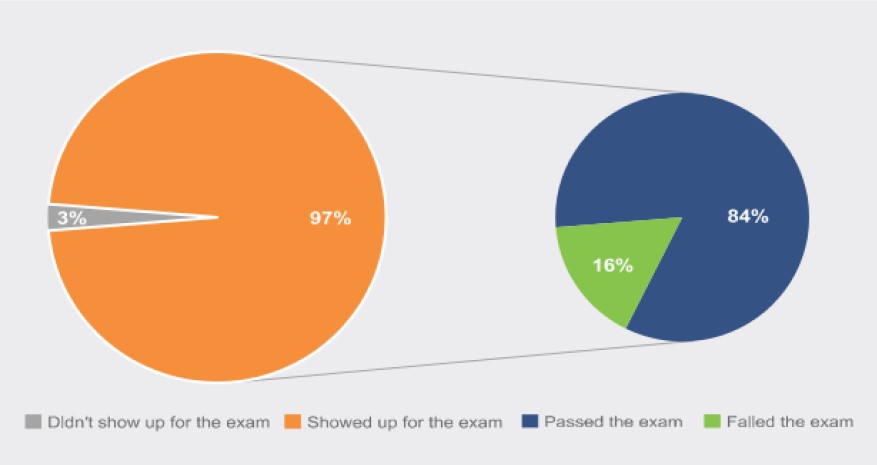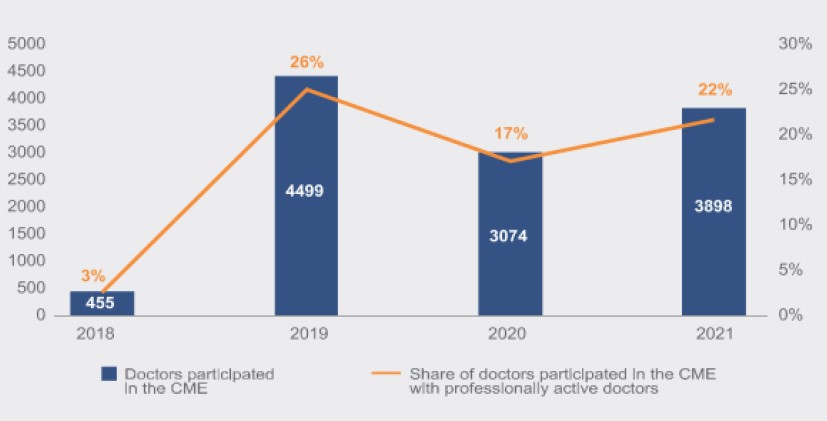About the authors
Ms Ketevan Gigilashvili, Senior Analyst, International and Donor Relations Division, State Audit Offi ce of Georgia
Ms Mariam Zaalishvili, Head of Social Sector Audit Department, State Audit Office of Georgia
Ms Nazi Chaganava, Senior Auditor, Social Sector Audit Department, State Audit Office of Georgia Contact: iroffice@sao.ge
In response to the shortage and imbalance of healthcare personnel and in accordance with the World Health Organization's (WHO) Global Strategy on Human Resources for Health Workforce 2030“ adopted in 2016, it is crucial to develop a healthcare workforce with the appropriate skills to effectively address healthcare challenges and meet current and future population needs.1
One of the important priorities of the Government of Georgia is the development of social policy and human capital 2, according to which the National Health Care Strategy of Georgia for 2022-2030 was approved 3. The goal of the strategy is to enhance the development and effective management of the healthcare system, to improve the health status of the population, to ensure universal access to healthcare services and to develop human resources in the field.
Recognizing the importance of the topic, the State Audit Office of Georgia (SAO) with the support of U.S. Government Accountability Office’s Center for Audit Excellence, studied the effectiveness of the mechanisms and measures, which were implemented to ensure adequate qualification and sufficient quantity of medical personnel in the country within the scope of performance audit conducted in 2023.
The Professional Development of Human Capital in the Health Care System – Performance Audit Report 4 encompassed the activities of three Georgian government entities: Ministry of Internally Displaced Persons from the Occupied Territories, Labour, Health and Social Affairs (MOH), the Ministry of Education, Science and Youth (MES), and the Agency for Regulation of Medical and Pharmaceutical Activities (Agency). The audit focused on four important areas, through an in-depth analysis of which the SAO identified respective key findings:
1. Needs Assessment for Medical Personnel and Regional Coverage
There is an imbalance in terms of regional coverage of healthcare professionals in the country. The majority (58%) of actively practicing doctors and nurses are employed in the capital of the country; there is a sharp difference between the number of graduates of bachelor programs and number of applicants for residency programs. Besides, the number of bachelor graduates of the nursing program is low and decreases every year, despite a strategic goal of increasing enrollment.
2. Postgraduate Education and Certification
The State Program for Postgraduate Medical Education (PGME) currently lacks a mechanism to identify priority medical specialties for the country's healthcare needs. A significant part of the goals of the program has not been achieved and a majority of specialists are not employed in the respective municipality.
The process of updating materials for qualification and certification examinations granting the right to practice medicine lacks systematic approach. Furthermore, the qualitative aspects of the exam material are not studied during the examination test development process. An estimated 75% to 80% of the examination test is publicly accessible, and the required passing score for the exam is set at 75.5%. As the qualifying exam is only a written test, the necessary practical skills are not assessed. Based on the above, the pass rate for the certification exam is high. 26
Figure 1: Certificate Exam Pass Rate(2018-2021) Analysis of 4,157 Applicants 27
3. Continuous Professional Education
The approach to Continuing Medical Education program (CME) is unsystematic. Since the CME is not mandatory for all medical personnel, the participation of doctors and nurses in both mandatory and non-mandatory Continuing Medical Education programs is low, consequently in 2018 - 2021, only 43% of the 17,632 doctors participated in CME. The current accreditation process for CME programs lacks a robust monitoring mechanism to effectively track the implementation of mandatory programs. A total of 757 CME programs were provided between 2018-2021, out of these, 108 (15%) programs were monitored in 2020-2021. From the mandatory 628 programs, only 90 (14%) were monitored.
Figure 2: Data analysis of 2018-2021 of doctors involved in the CME compared to the number of professionally active doctors
4. Medical Workforce Data Collection and Stakeholder Collaboration
Coordination between the Ministries of Education and Health in the field of medical education is not consistent in achieving the goals set by the strategy. There is no complete and reliable information on the total number of active medical personnel, the number of medical personnel participating in the CME program, as well as data on doctors who have undergone or require professional rehabilitation programs.
Following the audit findings, the SAO issued six main recommendations to the auditees with the objective of ensuring the professional development of medical personnel.
Recommendation N 1 to MOH:
Within the framework of the state program of PGME, in order to eliminate the shortage in healthcare workforce, criteria for determining priority areas should be developed and respective measures should be taken to identify and eliminate shortages in specialties. It is also necessary to develop measurable and result-oriented quantitative and qualitative indicators for evaluating the effectiveness of the program, efficient mechanisms for monitoring and controlling of the program implementation should be realized.
Recommendation N 2 to Agency:
In order to efficiently monitor compliance of medical institutions/schools implementing PGME programs with the accreditation requirements, it is necessary to establish a control mechanism - criteria for selecting medical institutions and a monitoring methodology.
Recommendation N 3 to MOD & Agency:
To ensure the essential level of competence among medical professionals in the country, a mechanism for obtaining independent medical certification based on best practices should be established, which will assess both theoretical knowledge and practical skills. Furthermore, an instrument for creating, updating, and quality assurance of certification exam tests should be developed.
Recommendation N 4 to MOH & Agency:
To establish an effective system of CME and ensure continuous professional development of the medical workforce, it is vital to introduce mandatory CME requirements for each specialty, applicable to all professionally active medical professionals. Into this, well-defined mechanisms for monitoring accredited CME programs and the awarding of credit points should be established.
Recommendation N 5 to MOH:
To determine HR policy in the health care system, up-to-date databases should be created with comprehensive information: on the existing healthcare workforce, including the number and qualifications of personnel at all levels of education, along with the number and competencies of potential healthcare personnel.
Recommendation N 6 to MOH & MES:
To ensure highly competent professionals in the health care system, ministries should collaboratively develop an effective coordination mechanism for undergraduate and postgraduate medical education: by determining accountability based on the desired outcomes, developing respective policies and procedures, and establishing the robust mechanisms for monitoring and evaluating of the results.
The SAO’s recommendations are developed on the basis of the best international practices, to this end, existing approaches to healthcare and medical education systems in the WHO, the USA, Germany, UK, Turkey, and other countries were studied. Furthermore, experts from the U.S. Government Accountability Office Center for Audit Excellence supported the audit process by contributing their approaches and methodologies, ultimately enhancing the audit's impact.
The audit report was discussed at a meeting of the Parliamentary Standing Group on Audit Reports of the SAO, with the participation of the auditees, that agreed on the findings and recommendations. Based on the SAO recommendations, the auditees prepared a comprehensive action plan, which will foster the development of a modern, efficient, and effective system of medical education and healthcare, aimed at enhancing the qualifications and capabilities of healthcare workforce.
SAO will further follow-up with the implementation of the recommendations in the Audit Recommendation Implementation System (ARIS) innovative platform, which will monitor the follow-up process.